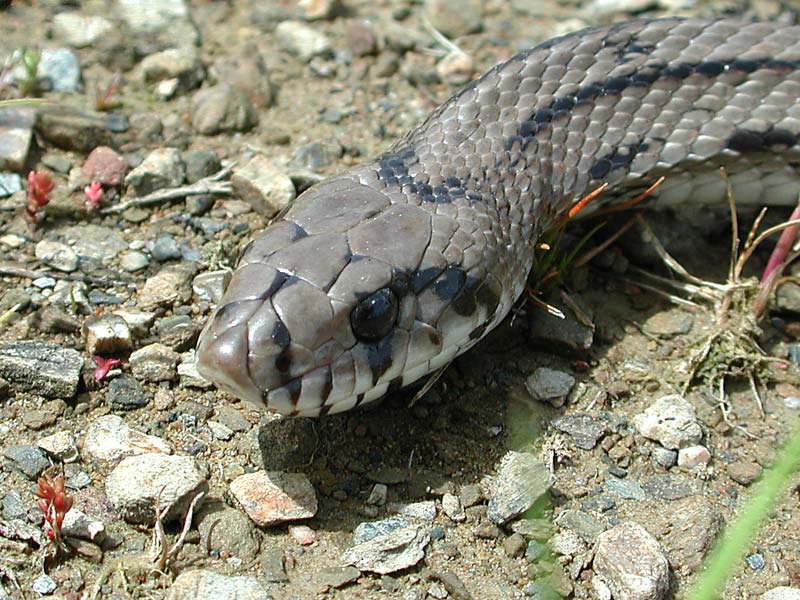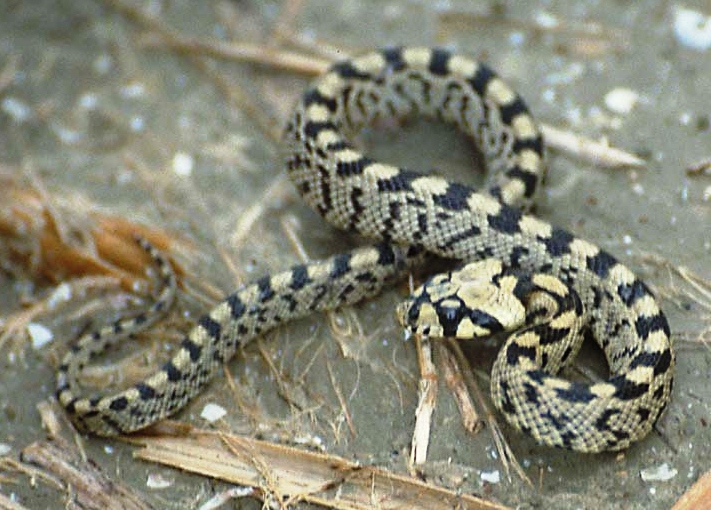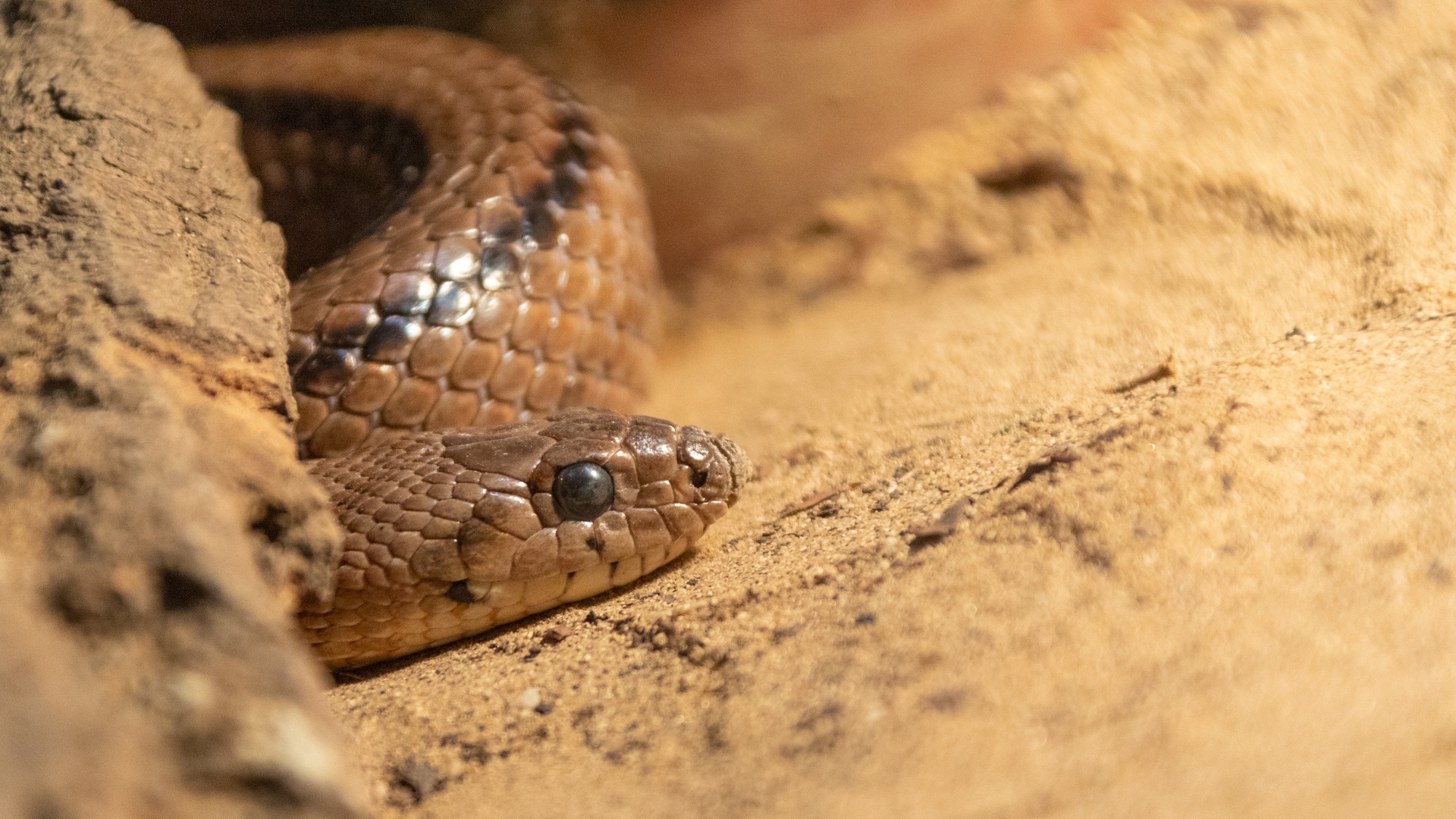
Within the kingdom of reptiles, the ladder snake is one of the lesser known (and yet one of the most visually appealing) animals. From the colubrid family, you will come across an animal with an incredible shape.
If you want to know more about her, for example how is the ladder snake, their natural habitat, feeding or reproduction, be sure to read what we have prepared for you.
How is the ladder snake
The ladder snake, scientifically named Zamenis scalaris, It is the only snake in the colubrid family (although it was previously included in the Elaphe genus). It is quite large in size, since males can reach 157 centimeters in length, and females can exceed that figure.
As for its shape, it is very robust, strong and thick. Its head, body and tail, which is shorter than normal for snakes, can be distinguished quite well. In the case of the snake, despite being small (and inconspicuous), it has a pointed snout and small, black eyes. In addition, it is also covered in large scales, especially around the nostrils.
The rest of the body also has dorsal scales, which are shiny and smooth, even soft if you touch them. Its design pattern is striking, since, when they are young specimens, it has some black spots on its back that simulate the letter "H", and its design is really similar to that of a staircase. However, in their adult stage they lose that characteristic that gives them their name.
This snake is light gray in color when young, but as it becomes an adult, it fades to a more yellowish color with barely visible black spots. What they do gain are two black lines on their back that run almost completely.
The life expectancy of the ladder snake is relatively long, since it can live up to 15-18 years (there are specimens that have even exceeded 20 years).
Ladder Snake Behavior

Despite the fact that the ladder snake is not a poisonous specimen, that is, if it bites you it will not do anything more than an annoying wound, it is one of the most aggressive in the Iberian Peninsula, so it is not he will hesitate to attack and fight if someone gets in his way.
We talk about a diurnal snake, and terrestrial, since it is rarely seen climbing trees (although it can do so and in fact, when food is scarce on earth, it usually goes for bird nests).
Habitat
The natural habitat of this reptile is both the Iberian Peninsula and part of France. It is common for him to live in the mountainous areas of northern Spain, but it can also be found in Menorca and Mallorca, due to the fact that it was introduced to those islands.
It likes Mediterranean environments, with heat, but also humidity, and it is scarce in areas that are too arid or very cold. As for its altitude, it will depend on where it is since it can reach 2000 meters above sea level, although in the northern part of Spain it will not be seen beyond 500 meters.
Ladder Snake Feeding
The feeding of the ladder snake depends to a great extent on the phase in which the animal is.
If the snake is a baby or young, it feeds on small insects, such as grasshoppers, lizards and even invertebrates.
If the snake is an adult, then its diet is based on small vertebrates such as rodents and even, in some cases, small birds. He doesn't eat anything bigger than a rabbit or a rabbit.
When hunting, the way he has of catch their prey is by strangulation. To do this, it first captures them, trapping them in its mouth, and then coils around your body in order to strangle the victim.
Reproduction of the ladder snake

During the months of October and November, this snake goes through a period of winter dormancy, that is, it takes refuge in a burrow to sleep for four or five months. It is when it awakens, around April and May, that reproduction takes place.
At that time, the specimens meet and mate with other snakes of the same genus. This usually happens at night, although there are also some who use the morning to do it. Mating takes place for about an hour.
After that, the The female will shed her skin and it will be the time for her to lay her eggs. To do this, it will look for a place to bury them and will leave an average of between 5 and 15 eggs that it will abandon since they are not animals that take care of the young.
When they are born, two or three months after laying, they are approximately 10-25 centimeters and are independent, as well as much more aggressive than their parents. Their goal is to survive on their own, so they are able to attack other animals that they feed on to grow quickly.
Can you have a snake of this species as a pet?
The ladder snake is an animal that is only found in Spain, and in a certain part of Portugal and France. Although it is not in danger of extinction, it is a protected species, and as such, it must be left in its natural habitat.
In addition, it is very beneficial for humans, since it is an avid rodent hunter, which prevents major problems with these animals. Being harmless to man (although aggressive), it does not pose any risk to him.
As for having it as a pet, you have to take into account that It is not an animal that is sold in stores, but it is in the wild and it is recommended not to remove it from its environment. The aggressiveness that it has makes it very difficult to tame, which can end up hissing and snorting all the time it sees you, so it will not live well.
